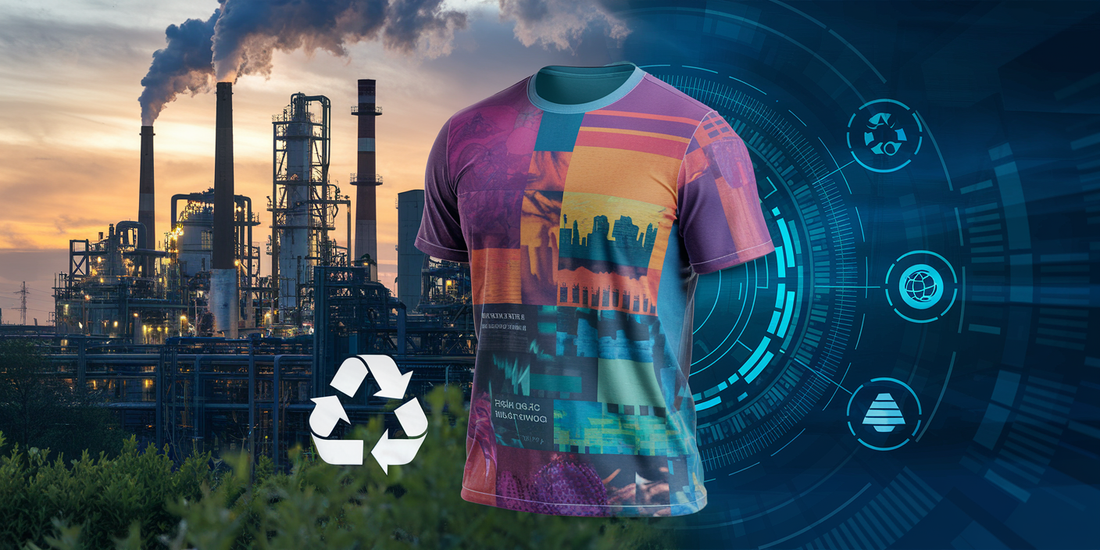
Can Polyester's Eco Makeover Turn Your T-Shirt into a Climate Hero? Discover the Profit Potential!
Share
Take a peek at the tag on your go-to shirt – it's probably polyester! With a jaw-dropping 73 million tons produced annually, polyester dominates over half of the world's textile fiber market, surging 15% from last year’s 63.3 million tons. The ever-growing hunger from fashionistas, home decor fans, and carpet lovers fuels this craze. But hold on – the polyester frenzy spells colossal waste issues and emission nightmares! While clever demand reduction tricks are a must, there’s a golden market chance for sustainably crafted polyester goodies to push emissions down even more.
Polyester t-shirts flaunt a carbon footprint of a whopping 20.6 kg of CO2e throughout their lifecycle. Given that a billion t-shirts are sold every year in the U.S. alone, those emissions stack up fast! Eager to grab eco-friendly and ethical picks, consumers are all ears. Big shots like Nike and Patagonia are racing to hit targets with recycled polyester and other responsibly sourced materials in their products.
From your closet to your couch, stitching the polyester value chain is a wild ride! Fossil fuel favorites like naphtha and ethane transform into chemical superheroes that make polyester. The PET (polyethylene terephthalate) resin in polyester creation isn’t just for threads; it’s the backbone of soda bottles and oodles of plastic playthings! But brace yourself—PET’s carbon party is double that of other plastic resins.
The chemical world groans with low commodity margins and steep costs, making emissions reductions a tightrope walk. The result? Cheaper, greener production tricks remain beyond reach. Can an emissions-diverse market save the day? Imagine reliably low-emission products catching consumers' eager eyes while filling producers’ pockets, enticing them to dive into emissions-reduction initiatives. Could polyester be the next hero after sustainable aviation fuel (SAF) flipped the script in the aviation fuel industry?
With an ocean of thousands of global chemicals, choosing a first mover for emissions-differentiated markets isn't easy. But polyester stands tall and proud among the lot! This super-fiber serves up standout roles in fashion and home wooden floors. Spinning its magic across varied industries offers endless opportunities to replicate secured successes elsewhere. On the flipside, polypropylene, with its vast market spread, and more niche players like propylene glycol and PVC, aren’t quite ready for near-term debut.
Breaking down the polyester value chain reveals each step's emissions trouble spots, paving the way for significant change. Nearly 25% of emissions spark when PET resin morphs into polyester yarn, thanks to all that electricity chugging (Scope 2 emissions). Suppliers finding renewable energy alternatives and flaunting their eco-credentials can be game-changers! Primary chemical makers contribute their chunk too, manufacturing necessary chemicals like xylenes and glycols (Scope 1 emissions). With electrification and other top-tech tricks, stakeholders can curb over half the emissions chain-wide if low-emission PET demand rises!
Drumroll – Low-emissions polyester = Profit Bonanza! Boosting value from $1.60 to over $11 per t-shirt, the finish-to-fashion leap is huge. Plus, consumers splurge faster on truly sustainable goods! Retailers in touch with their climate-conscious side can send rippling demands for differentiated polyester products. Banding together in magic groups like buyers alliances dials up purchasing power, setting enticing price signals for producers. Past proof? The Sustainable Aviation Buyers Alliance (SABA) rocked by aligning expected pricing and demand for low-emission jet fuel.
Steering the change, feedstock suppliers and chemical creators can shine with innovation and nimble ops. Early-stage cash investments may be steep, but are chemical producers ready to ride the wave by providing juicy emissions data? Could policy boosts like production tax credits or Emissions Trading System incentives zap change across the polyester scene?
The future? Dazzling differentiated markets powered by stunning product standards and stellar certifications. Aligning standards across the sustainability stage? Crucial! Emissions-differentiated polyester sparks consumer delight and sky-high profits, igniting a virtue-driven future in the chemicals realm. Stay tuned for our series deep-diving into tactics powering this polyester revolution!
And wait, there’s more! Look deeper into this vibrant space of demand aggregation, petrochemical cuts, and the lively plastic industry landscape with these recommended reads:
- Demand Aggregation 101
- The Chemicals and Climate Connection
- We Can Cut Petrochemicals Use Today: Textiles
Stay in the loop – polyester’s thrilling transformation into a carbon-conscious superstar awaits!
